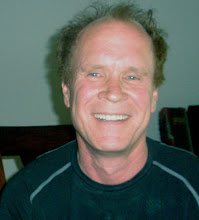As I go around Silicon Valley and talk to people, I don't meet that many that are aware of the goldmine that lives in the social network data that is being collected. Most of us see the interfaces to networks, we see cellphones, computers and other interfaces, but the network inside is out of sight and out of mind.
Several companies, including Microsoft, are making software that helps visualize the networks. They draw pretty pictures of the networks and we can get a sense of how connected we are or the world is in general. These are sometimes called "social graphs," but it is the latest generation of sociograms which were invented in the 1930's by a psychologist named James Morano. There has been wonderful software available for more than 10 years to visualize and analyze networks.
The key here is "analyze." What does that mean? There is a lot to it and over time I will add bits and pieces to this blog, but the point I want to make that is not obvious relates to what I previously wrote about 'roles." We are both who we are inside and who we are expected to be by ourselves and others. It can be difficult to see, but who we are, to some extent (and I think a very large extent) has to do with what others expect of us over the years.
We talk about things like "culture" and have a sense that people who grow up in different environments appreciate different things and have different ways of behaving. It is worth noting the "different environments" portion of this. What is an environment but a set of relationships located in one part of the social world? The key here is location. If we know where someone is located in social space, we can make some sophisticated guesses about who they are. Their culture is a consequence of their location so knowing their location can be a proxy for culture. In fact, perhaps "culture" is just a word we used because we could not see the networks. Now, with cell phone data, IM data, social networking data, email traffic data and so on, we can trace the patterns of connections between people. But, is that enough?
The links in "small world networks" like these can be very useful, but they are not the whole story. We are members of multiple networks. Some large organizations are creating "social networking" software that they can use internally. In some more progressive organizations they allow users to create their own social networks. In the US for all of this is owned by the companies. In principle, it is possible to see individuals as members of multiple social networks, which is the optimum situation for knowing who that person is. But even in flat, small-worlds networks, it is possible to find structural equivalence (or its variant regular equivalence) or people that, because of the patterns of network ties in which they enmeshed look at themselves and are looked at as similar.
Old marketing does segmentation of society by attributes, age, gender, education, race and so on. But, if you think about it, the relationship between age and music taste is a coincidence. Because people listen to music of their age group and they all grow older at the same time, there will be age graded bands of musical taste. But it is the relationships that "caused" the musical taste, not the person's age.
Innovation spreads through structural equivalent sets. People have a tendency to adopt ideas or do thing that people they think of themselves as similar do. Status, prestige and so on are all relative to who we think we are. The radical thing that I am saying is that we only get to make up part of who we think we are. We compare ourselves and are compared, just to know who we are. Networks can show us who is similar, who is different, who associates with each other, who is thought of as influential and much, much more.
Companies these days need to be taking some steps:
1. Collect data in a form that can be easily analyzed by SNA.
2. Create strategies to have people use multiple networks (this goes opposite of the idea of social networks as a broadcast medium)
3. Choose and implement analysis processes.
4. Work to mitigate privacy and other fears.
Sunday, May 25, 2008
Subscribe to:
Post Comments (Atom)

No comments:
Post a Comment